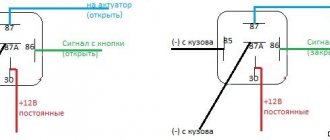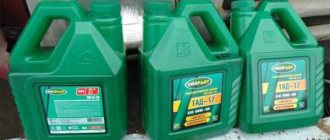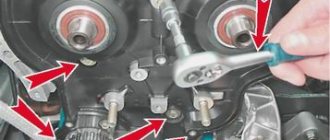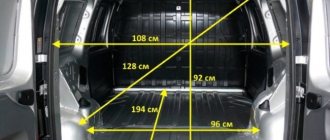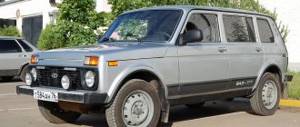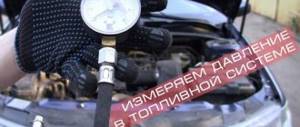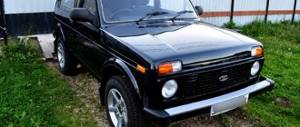There is probably no car enthusiast who is unfamiliar with the abbreviation WD 40. Cans of this miracle liquid adorn the windows of auto stores and are sure to be on the shelves of your home garage or in the glove compartment of your car.
“Vedashka” is used for repairing and servicing a car, motorcycle, bicycle, household tools, agricultural machinery, and even electrical installations.
Interestingly, the popular combination of four symbols has nothing to do with the liquid itself. It’s just that this name has long become a household name: just like “copier” or “jeep”.
When you enter a store, you ask to sell you “Vedekha”, and the seller does not even ask what composition you are interested in. Typically, the product description comes down to the size of the container.
What is WD-40?
If you ask this question in any garage cooperative, you will get a clear answer: WD-40 is a universal penetrating lubricant. Indeed, the vast majority of drivers buy this particular composition.
Auto service technicians are probably familiar with other purposes, not to mention sales consultants at auto stores:
- White lithium grease to provide long-lasting protection against dust, moisture, and corrosion;
- penetrating lubricant with capillary properties, for instant “loosening” of soured parts or fasteners;
- silicone lubricant for instant fixation to create a thin layer that lubricates friction parts;
- electrical contact cleaner with instant drying - for cleaning and protecting electrical switching equipment from corrosion;
- WD-40 aerosol for cleaning brake mechanisms: it is important that after drying the friction parts do not lose their tenacity;
The secret of the name
In fact, there is no secret. The main purpose of the “magic” composition is to displace water (or Water Displacement in the manufacturer’s language) . Any of the above products, regardless of the special application, first of all dehydrates the surface being treated. And after that it lubricates, eliminates squeaks, protects against corrosion and dust.
But the number “40” is a great secret of the manufacturer. One of the journalists, at the suggestion of the company’s advertising department, came up with a beautiful legend. Allegedly, the number forty means the serial number of the attempt with which it was possible to create this composition. By the way, initially the company produced a universal penetrating rust converter.
In fact, WD-40 is just a trademark, and also the legal name of an enterprise. A dozen different chemicals are produced with this logo. The most popular of which is penetrating lubricant.
In fact, in North American business circles, the enterprise is known as WDFC. It is this abbreviation that is placed on the company's shares. However, on the shelves we see a more familiar logo.
WD-40 how it all began
Initially, the chemical company was created within the framework of the US space program and in close cooperation with NASA. As scientists have found, steel parts of rocket bodies actively rust even in space.
A tender was announced for the creation of a protective device. The winner was a small one founded in 1953. The composition was supplied to NASA for processing rockets of the ATLAS family.
It was on a corrosion-protected rocket that the first American astronaut, John Glenn, went into space. Since there was no special secret in this (the USSR was still ahead of America in this matter), the new president of the company, John S. Barry, began developing a similar composition for cars, and then completely changed the “space” name of the enterprise. As a result, since 1969, the world has known the WD-40 logo.
Disadvantages of WD-40
A large number of users mistakenly believe that treating rusted parts with WD-40 will protect them from corrosion in the future. Unfortunately, this is not the case, WD-40 is essentially a moisture displacer, with minor lubricating properties that are not sufficient for full anti-corrosion protection. The use of WD-40 as a preservative is not correct and the parts treated with it will not be fully lubricated and protected from corrosion. After displacing moisture, WD-40 does not lubricate the parts well enough. Subsequently, due to its hygroscopicity (the property of drawing moisture from the environment), WD-40 draws moisture from the environment, leaving it on the treated mechanism and corrosion begins with renewed vigor, the liquid itself evaporates under the influence of the environment. The petroleum components present in the composition create a protective film, which, unfortunately, is too thin and not durable.
These shortcomings can be easily eliminated. To do this, it is necessary to carry out additional treatment with a lubricant intended for this purpose, for example Litol, silicone grease or gun oil.
Characteristics and composition of VD-40
The main property of WD-40 is not the displacement of moisture. This liquid is valued for its unique ability to get into any microscopic holes and crevices. Let's look at how bolts and nuts that are tightly stuck as a result of corrosion are freed.
- the liquid penetrates into all possible cracks and spaces between rust and normal metal;
- after some time (up to 12 hours), delamination of corrosion and steel occurs;
- at the same time, small flakes of oxidized metal lose their connection with each other;
- If you turn the fastener after the penetrating lubricant has finished working, the corrosion will disintegrate and the nut will come off.
Lubricate the steering rod joint
Another property is to reduce friction. The liquid creates a thin layer with a low resistance coefficient. Metal, rubber, plastic - move freely relative to each other. For a while, the vane can replace the grease.
Important! It is unacceptable to use WD-40 compounds as a permanent substitute for engine oil. This is a fairly volatile composition, it dries quickly, leaving the work surface unprotected.
A derived characteristic is the elimination of squeaks. Again, the effect is short-lived, especially in areas of high stress. This surface should be treated as quickly as possible with normal grease. And as a temporary (operative) solution, WD-40 is irreplaceable.
Protective property. Some compounds produced under this brand adhere well to the surface and prevent contamination and water ingress.
Checking life hacks related to the use of VD-40 - video
Defrosting car locks. Truly an invaluable property. The only problem: if the car is frozen (outside the garage), WD-40, as luck would have it, will end up inside the frozen car interior.
Almost zero electrical conductivity. Again, this does not apply to all types of VD-40 liquid. Contacts in connectors or blocks are treated with certain compounds.
Thereby:
- Moisture is displaced and a barrier is created for its penetration.
- Corrosion protection is provided.
- Thanks to the lubricating effect, it will not be difficult to separate such pads in the future.
Dissolving dirt. Again, one of the properties for which vedehu is so loved. The most ossified oil deposits (with the exception of temperature slag build-ups), stuck-on dirt. glue residues, devulcanized rubber gasket: all these troubles can easily be overcome by the magical all-penetrating composition.
Composition of WD 40
Composition of WD-40 and similar lubricants:
- White spirit - organic solvent - 50%
- Carbon dioxide - 25%
- Mineral oil – 15%
- Additives (rust converter, preservatives, etc.) - 10%
There is also other information about the composition:
- white spirit - 45–50% -
- Solvent-free paraffin distillate - 5–25%
- dewaxed distillates 12–18% —
- CO2 2–3%
Knowing this composition, you can try making WD-40 with your own hands. Try and experiment.
What is WD-40 made from?
Of course, the full composition is the intellectual property of the company and is kept in the strictest confidence. No worse than the secret layer that was applied to NASA rockets. Thanks to this secret, a lot of gossip and speculation arose around the formula of the liquid.
Evil tongues claim that this is nothing more than kerosene with flavoring. The source of outrage is the price: tens of times more expensive than the intended basis. Everyone knows about the penetrating ability of kerosene, but this is where its beneficial properties end.
How to distinguish fake WD-40 from the original - video
The other extreme is aggressive solvents, almost based on hydrochloric acid or caustic soda. Another mistake: with rare exceptions, WD-40 is neutral to metals, wood, rubber and some types of plastic.
However, there are completely open sources. The Consumer Product Safety Certificate states that this product contains:
- strong but safe for parts solvent: white spirit (up to 50% of the volume);
- displacing substance: in our case, carbon dioxide (again safe for materials) – no more than 25%;
- lubricant based on mineral materials of petroleum origin: 15%;
- inert (non-reacting) components – 10%.
It is the last section that hides a trade secret. And the certificate says that the composition can be used on equipment without causing damage.
The same cannot be said about the effect on humans: if ingested, food poisoning is possible. If it gets on your hands, simply wash them with soap. But to save the mucous membrane, you need to see a doctor.
Any analogues of WD-40 have similar capabilities and a completely different composition. The packaging may say: super-solvent, liquid key, etc. However, in terms of effectiveness of use, the Vedashka is a champion.
Composition and characteristics
Experts say that there is a document that indicates the main components of WD-40. No one has verified its authenticity, but drugs created on its basis have the same capabilities.
This substance consists of:
— white spirit (50%);
— carbon dioxide (25%(;
— mineral oil (15%);
— hydrocarbons-alkanes (10%).
At first glance, this is a very simple composition, which gives WD-40 many useful properties and makes it extremely popular.
Many people know that white spirit is a solvent with high penetrating abilities. It effectively fights various substances based on petroleum products, fats, stains, etc. This allows it to be used in WD-40 to deeply penetrate and clean surfaces and cavities.
Carbon dioxide is needed in the composition to give it atomization capabilities.
Mineral oil provides lubrication and creates a thin film on any lubricated surface. It promotes a water-repellent effect.
The purpose of carbon-alkanes is not known exactly, but they give the Vedashka a number of useful properties.
Use in everyday life
This is a truly versatile liquid. In addition to the garage, it can be used at home. For example, revive a fan in which the bearing grease has frozen after winter storage. Rework an old padlock or door hinge. You just need to spray the spray in the right place.
Remove marker marks from kitchen countertops. Remove the chewing gum from the carpet. The only drawback of indoor use is the characteristic smell. It will have to be carefully washed out. In addition, the application temperature is limited. Vedashka is highly flammable. But the frost will not prevent you from opening the icy lock on the iron door of the entrance.
And yet the advantages outweigh. The spray is ready for use immediately. The smell isn't that bad. The composition is non-toxic: of course, if you do not drink it. And most importantly, it leaves virtually no traces. Unless it is removed from the paintwork as quickly as possible.
Analogues of WD-40
Technical aerosol has been on the market for over 50 years. During this time, a large number of manufacturers were able to develop their analogues.
WD1299 Multispray and its successor, PENETRATING OIL, are powerful, long-lasting lubricating sprays that instantly penetrate cracks, crevices and threads, instantly releasing bolts, nuts and other fasteners. Additional friction-reducing lubricants eliminate annoying squeaks.
Permatex Fast Break Super Penetrant is a powerful remedy for rusty and stuck-on components. Works quickly to penetrate and loosen rust, tar, grease, dirt, carbon deposits and corrosion from metal parts. Frees frozen nuts, bolts and fittings in all types of assemblies.
Super Rust Penetrant 500 ml from WYNNS - penetrating lubricant.
Rostloser mit MoS2 Spray is a penetrating lubricant with molybdenum.
Line of lubricants from Hi-Gear. HG5510, HG5512, HG5510 - a line of penetrating lubricants from a very popular manufacturer. They differ in the presence of additional additives (molybdenum disulfide, Teflon, rust converters).
MANNOL M-40 450 ml Multifunktion Lubricant - Special high quality liquid. Penetrates into hard-to-reach places, lubricates and protects treated parts well. Protects contacts. Will not react with paintwork and chrome-plated metals.
Cleaner WD-40 SPECIALIST
- Google+
- LJ
- Blogger
Penetrating lubricant WD-40, no matter how good it is, does not specialize in dirt and dust as much as the substance of the same series WD-40 SPECIALIST, which is a direct cleaner. It is effective against dust and street dirt, soot and scale, condensation, and also helps hardened electrical appliances with increased sensitivity.
Some use it for printers and copy machines, some for wiping electronic circuits and switches. This cleaner can perfectly replace standard-type WD-40 when degreasing rubber, plastic and metal.
WATCH THE VIDEO
Among other things, this cleaner is very good at working with electrical contacts and has enviable advantages:
- Does not conduct electricity;
- Leaves no traces;
- Increases the wear resistance of electrical equipment;
- Passes even into the most inaccessible places;
- Has rapid evaporation.
